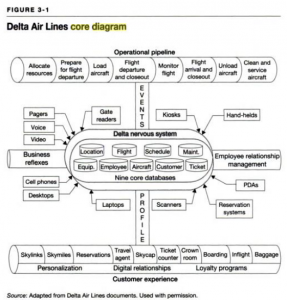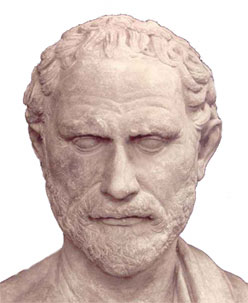When you look at the requirements and the rules governing agencies, it is easy to see how the unification operating model is effectively required. Look at the acquisition process (Chapter 4), all solicitations must be posted on Fed Biz Opps, all contractors must register with SAM, contract reporting into FPDS and past performance must go into CPARS. There are only a very few payroll providers, agencies must use the same travel system, and all budgeting goes through the Office of Management and Budget. And these are just a sampling of the governmentwide mandated services. When you get into an agency like USDA or the Department of Treasury you will find other requirements that are just departmentwide. Further, there are probably a couple hundred more required or widely used services. This is why I can confidently defend the notion that the unification model is the operating model that most agencies are or should be aiming for.
Now take that aspect of the operating model one step further. This is where we get into how modern enterprise architecture should pay homage to its mother, Jeanne Ross, instead of its father, John Zachman. According to Jeanne, the reason we want to understand the operating model is so that we can develop the organization’s core diagram. The core diagram is the single representation of the technical complexity of the organization represented on a single page. She further identified different archetypes based on the different operating models. For example, the diagram to the left is considered the archetype for the unification operating model.

This archetype without context is no better than the pounds of documentation produced by many of the beltway bandits. So without delay, at right is the core diagram from Delta Airlines around the time the book was published (2006). Delta has probably changed since 2006, so comparisons to what it is now aren’t appropriate. But in 2006, having this type of view into the technology of the organization was remarkable.
Jeanne’s notion is that organizations should create core diagrams that do a couple of important things.
- They serve as a tool for identifying the truth. People can look at a core diagram and tell you where it is wrong. As each person helps you to fix it, the final product is as close to the truth as one can get.
- They help to organize people. Many of the tasks the government is working on are complex. Look at something like the Electronic Health Record between DoD and VA. That is a very complicated program. A core diagram helps people to understand the context and zero in on specific details.
This work is important because you have to know what you have, and where you are today. The core diagram is a really good tool to help you do that. Once you know where you are today, you can begin to think about where you need to go.
That is where the Information Resources Management (IRM) Strategic Plan comes into play. Think of the IRM Strategic Plan like this: the agency develops the Agency Strategic Plan as prescribed by the Government Performance and Results Modernization Act of 2010. This law is commonly known as GPRA-M. This is the document in which agencies identify their Agency Strategic Goals and Objectives. These are the mission-oriented goals and objectives. Within that process the CIO must figure out how she or he must change IT within the agency to realize those objectives and strategic goals.
As such she or he must take the as-is core diagram, figure out what the Secretary wants to do that is new or different, and then morph that diagram to deliver on those objectives and strategic goals. This discussion is what agencies must strive to deliver in their IRM Strategic Plan. The Agency Strategic Plans and the IRM Strategic Plans are to be published every four years on the public websites. And just to close the loop on the IRM Strategic Plan, the requirement for this is in the Paperwork Reduction Act:
(h)With respect to Federal information technology, the Director shall—
- in consultation with the Director of the National Institute of Standards and Technology and the Administrator of General Services—
- develop and oversee the implementation of policies, principles, standards, and guidelines for information technology functions and activities of the Federal Government, including periodic evaluations of major information systems; and
- oversee the development and implementation of standards under section 11331 of title 40;
- monitor the effectiveness of, and compliance with, directives issued under subtitle III of title 40 and directives issued under section 322? of title 40;
- coordinate the development and review by the Office of Information and Regulatory Affairs of policy associated with Federal procurement and acquisition of information technology with the Office of Federal Procurement Policy;
- ensure, through the review of agency budget proposals, information resources management plans and other means—
- agency integration of information resources management plans, program plans and budgets for acquisition and use of information technology; and
- the efficiency and effectiveness of inter-agency information technology initiatives to improve agency performance and the accomplishment of agency missions7 ; and
One key aspect of the IRM Strategic Plan is that they are durable. They should be good for four years. This is important because the tenure of most departmental CIOs is less than that. At least, according to GAO, most CIOs have the job for slightly more than two years. Thus it is important to commit to a strategy that is somewhat longer term so that it has a chance to be funded and deliver results. If each CIO came in and defined a new strategy then career staff would spend all their time trying to adapt to the new strategy identified by the CIO.
Thus CIOs should engage the agency to distill the complexity of the technical capabilities onto a one-page diagram that is called the core diagram and it, and how it morphs over time, should be the centerpiece of the IRM Strategic Plan. That IRM Strategic Plan should identify how the agency intends to mobilize technical capabilities over time and should identify a prioritization and timing of investments. In Chapter 8 we will focus on budgeting for IT, but suffice to say that the IRM Strategic Plan is intended to be the glue between the agency strategic goals and objectives and the investments that are funded from one year to the next.

